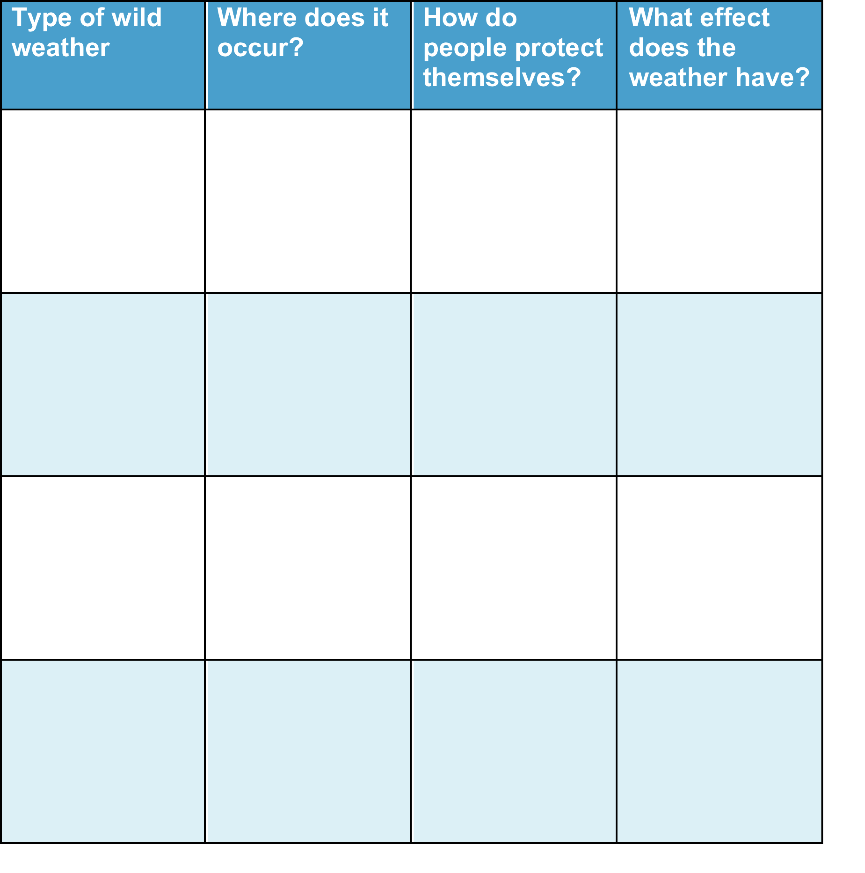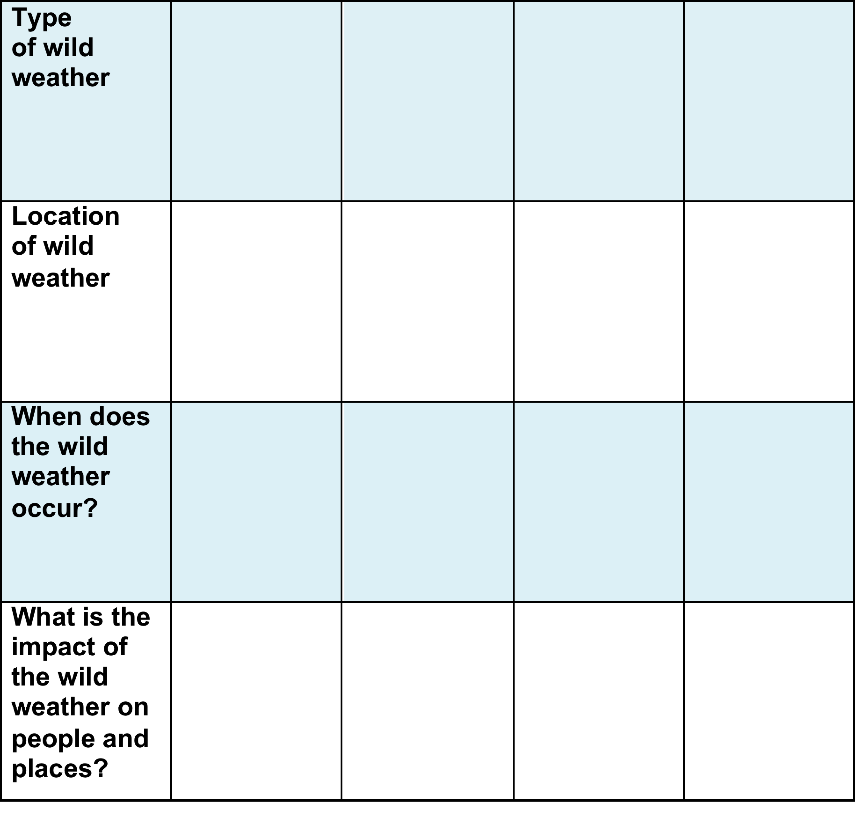Information for Teachers
Curriculum links
Australian Science Standards
ESS (ACSSU075) Earth’s surface changes over time as a result of natural process and human activity
ESS (ACSSU075) Effects of flood and extreme weather on the landscape
New Zealand Science Achievement Objectives
PW: The patterns associated with physical phenomena found in everyday situations involving movement, forces, electricity and magnetism, light, sound, waves and heat
PEB: The nature of the water cycle and its effect on climate
Helpful websites
You may want to direct your students to some or all of these websites to help with their investigations.
They can visit the combined NASA and NOAA site to learn about many different aspects of weather:
https://scijinks.gov/search/weather/
Students can learn how to read a weather map to see where any wild weather is forecast:
https://scijinks.gov/weather-map/
Predicting what weather is like is very important when wild weather is coming. Students can find out how accurate this is at:
How to search the internet
1 Keep your request short
Fewer words will give a more accurate search.
2 Choose exactly what you want
For example: Arctic Circle Climate
3 Use quotes
Double quotes around a set of words tell the search engine to consider those exact words in that exact order without any change. For example: “Arctic Circle Climate”
4 Use the plus sign (+)
If you add a plus sign (+) between words, the internet will search for all the words. For example: migrate+birds+whales+mammal
5 Use the minus sign (–) to say what you don’t want
Use a minus sign (–) to show words you do not want to appear in your results. For example: if you search for burrowing animals and do not want mammals in your search, –mammals will exclude mammals. Note that you need to put a space before the minus sign for the word to be excluded.
6 Be very clear about what you don’t want
Part 1
Ask questions and make predictions
After reading Wild, Wild Weather, you may have many questions about the different kinds of dangerous weather conditions, why they are dangerous, and what to do if you are experiencing wild weather.
List your questions
- Compare your list with questions that others have.
- Choose a question you would like to investigate.
- You can work alone, with a partner, or in a small group.
You may want to choose one or more of these questions to investigate
Q1. Which places in the world have the wildest weather?
Q2. Where are you most likely to experience a sandstorm or freezing rain?
Q3. Do all places experience the same wild weather?
Q4. Choose one particular kind of wild weather, e.g. tornadoes. Where are tornadoes likely to happen around the world? Why do they occur? How do people protect themselves from tornadoes?
Go to Part 2 Plan and investigate →Part 2
Plan and investigate
Do searches in the internet or in books or talk to people who can help to find the information you are looking for.
Your teacher may suggest suitable websites for further information.
Go to Part 3 Record and analyse data →Part 3
Record and analyse data
Find a way of recording your information that will allow you to see any patterns in the data.
Data Chart for wild weather
 Download Chart
Download Chart
Go to Part 4 Evaluate the information →
Part 4
Evaluate the information
1. Look over the information you have gathered and the patterns you have found.
Where does the wild weather occur?
What time of year does it occur there?
What is the impact of the wild weather on people and on places?
2. Search for other patterns.
3. Makes notes about what you find.
Go to Part 5 Communicate and share ideas →Part 5
Communicate and share ideas
Look over all of the information that you have gathered in your investigation.
What are the most important ideas about your topic?
Make a chart showing the most important ideas.
 Download Chart
Download Chart
← Return to menu
